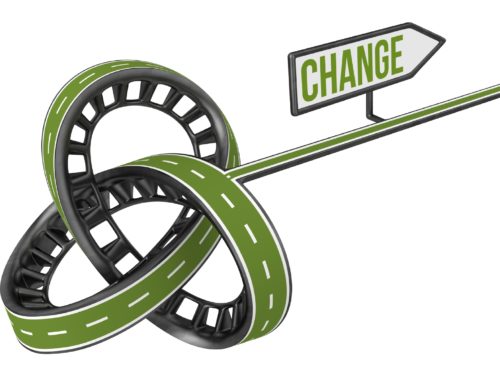Allan was at his wits’ end. The transformation team he was leading was in chaos. Their work was stalled, and their carefully crafted plan was in danger of being obliterated by discord, disagreement, and in a few cases, near-mutiny.
During our conversation, Allan lamented about how well everyone initially worked together. From his perspective, a few of the team members were allowing their personal discomfort with the change to get in the way of the work to be done.
An email from Allan’s team arrived later that day. His refusal to deviate from the change management plan was driving them crazy. He threw the timeline and project scope on the screen at the first sign of disagreement with the next steps to be taken. Every concern or expression of doubt was ignored.
From the team’s perspective, Allan was held captive by the project plan and wouldn’t (or couldn’t) allow the human emotions associated with the change to be considered.
As it turns out, everyone was right…and wrong.
Allan was correct that the initiative was in danger of missing important deadlines for which he was being held accountable. He was rightfully concerned that the team’s performance could reflect poorly on his capabilities. Plus, he genuinely believed in the transformation even though he wouldn’t be personally affected by its implementation.
The team was right, too. This project was important for them, and it was also deeply personal. They and their co-workers back on the job would be asked to work in a dramatically changed structure and environment. Reporting relationships and work processes were going to change. Rumors of lay-offs were rampant.
Allan was excelling as a change manager. His plan covered all the steps and projected all the timelines. It outlined the deliverables and allocated the resources. It considered everything except the feelings and emotions of the team.
The team also wanted things to be better, but they struggled with not wanting things to be different. They appreciated Allan’s responsibility to manage the change, and desperately needed him to be a change leader.
What Change Leaders Do
Change management enables you to define and complete a series of tasks in a project. You excel by mastering the tools and processes that are critical to the success of complex initiatives.
Change leadership is more concerned with effectiveness than efficiency. It takes a big-picture view of the entire change and searches for opportunities to help everyone to stay connected to the mission and vision.
Change leadership is a blend of art and science that includes the following:
- Aligning the change to the mission, vision, and/or values. If the change doesn’t advance your mission, move you toward your vision, or help you better live your values, why are you even considering it?
- Building a sense of urgency. There are those who want to take on change for the sake of change. Most, however, need a compelling reason to break the inertia that keeps people doing what they’ve always done.
- Establishing measurable goals and metrics. Goals and metrics maintain urgency and define what success looks like. Most important, they send a clear message about what is expected to be different as a result of this effort.
- Continually building and confirming understanding and support. You can’t have too much communication about change. It is an ongoing process, and it is just about the time you start to tire of this effort that you are actually starting to make an impact.
- Building capacity. Knowing that you want to do something is not the same as knowing how or having the capacity to do it. Make sure that everyone has the knowledge, skills, and resources to successfully implement the change. Most important, monitor the energy to ensure that people do not suffer from change fatigue.
- Empowering action and ensuring accountability. Give people control and allow them to try. Their honest mistakes are a natural part of doing something new and different. And ensure accountability. Now is the time to use the goals and measures to make sure that you are getting the results you want.
Successful change requires both management and leadership. Just remember that more change failures are the result of faulty leadership rather than poor management.
Randy Pennington is an award-winning author, speaker, and leading authority on helping organizations achieve positive results in a world of accelerating change. To bring Randy to your organization or event, visit www.penningtongroup.com , email info@penningtongroup.com, or call 972.980.9857.





